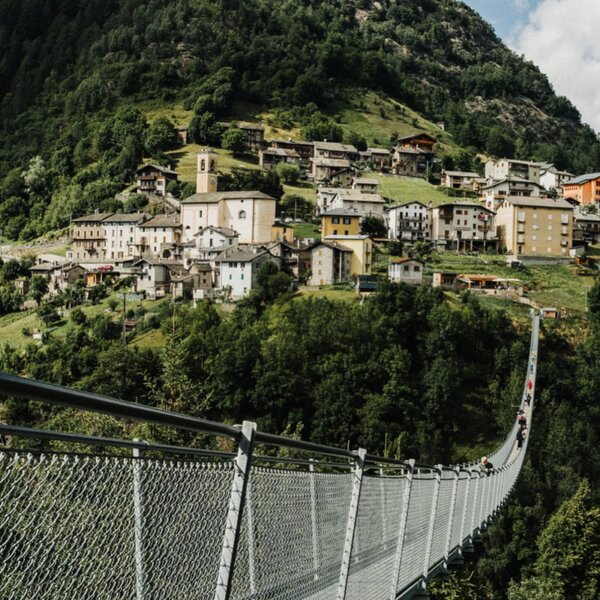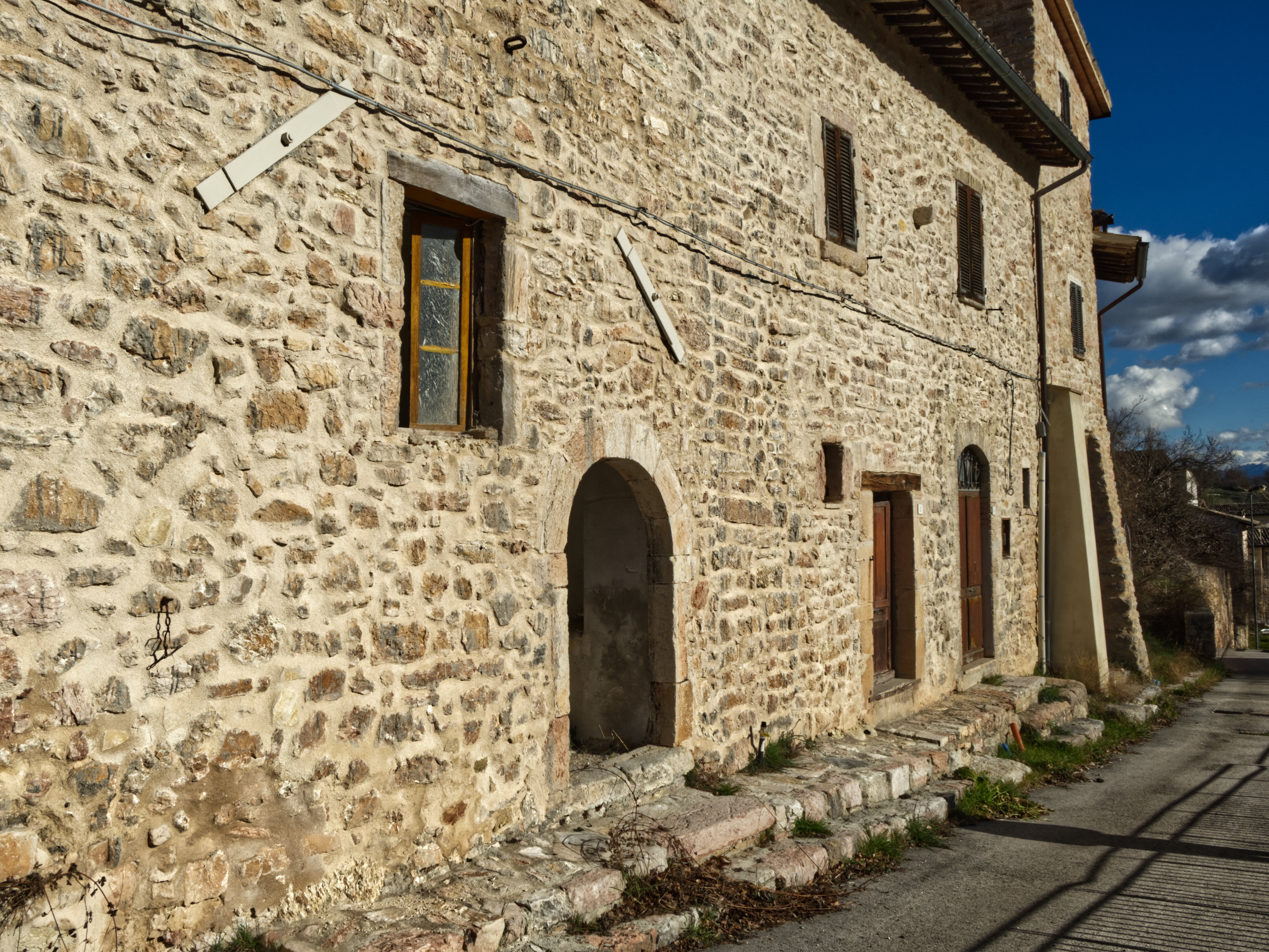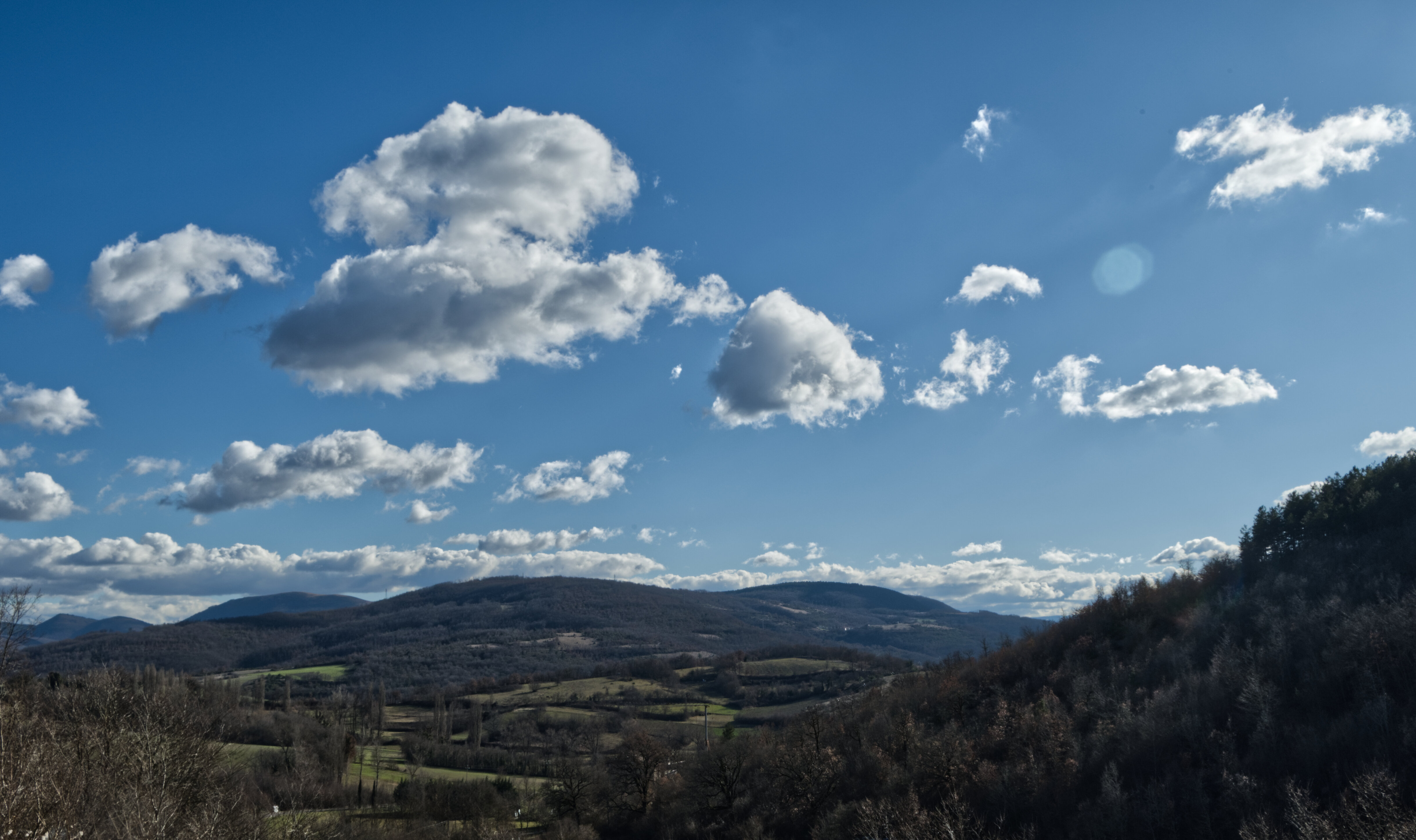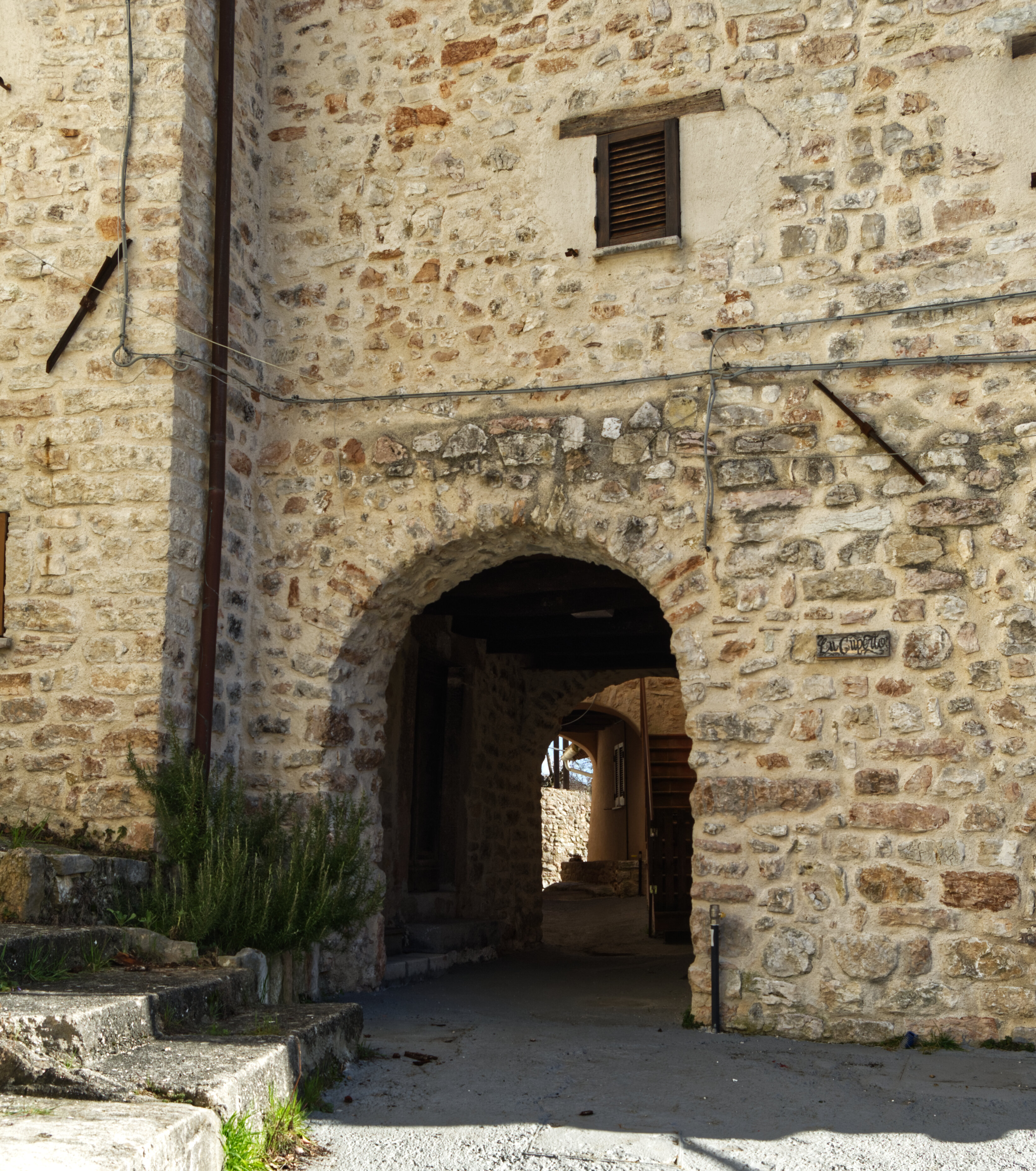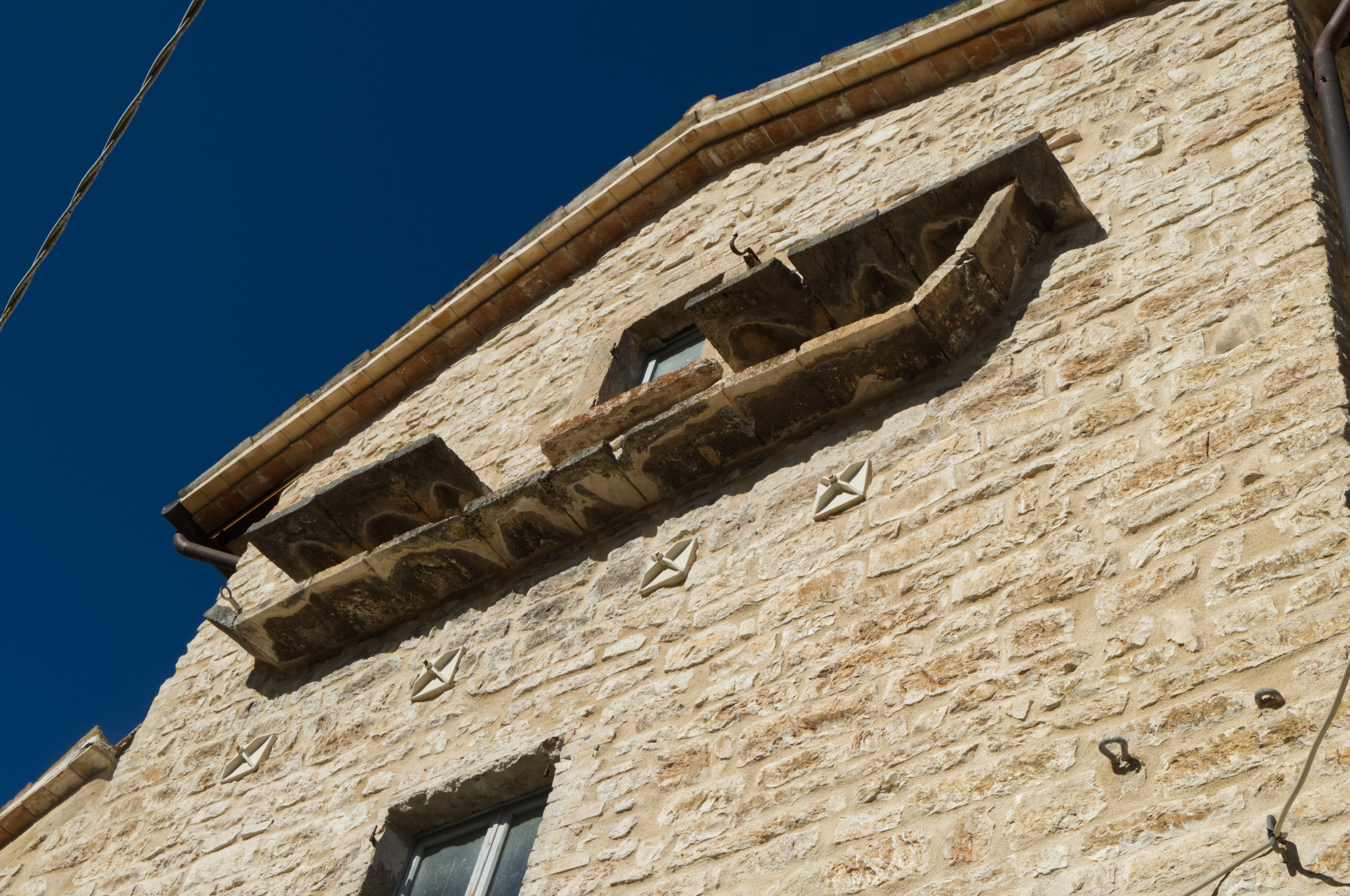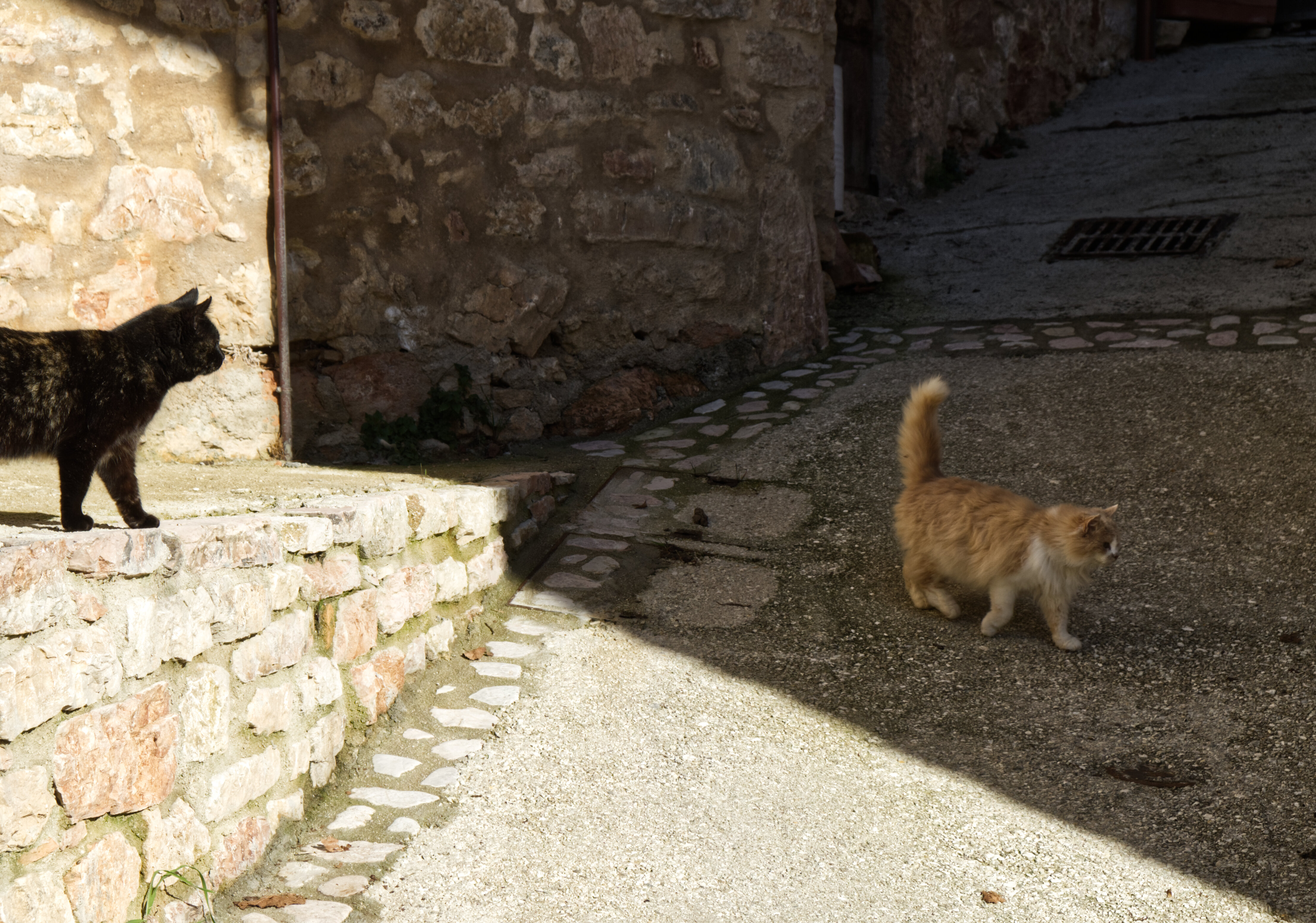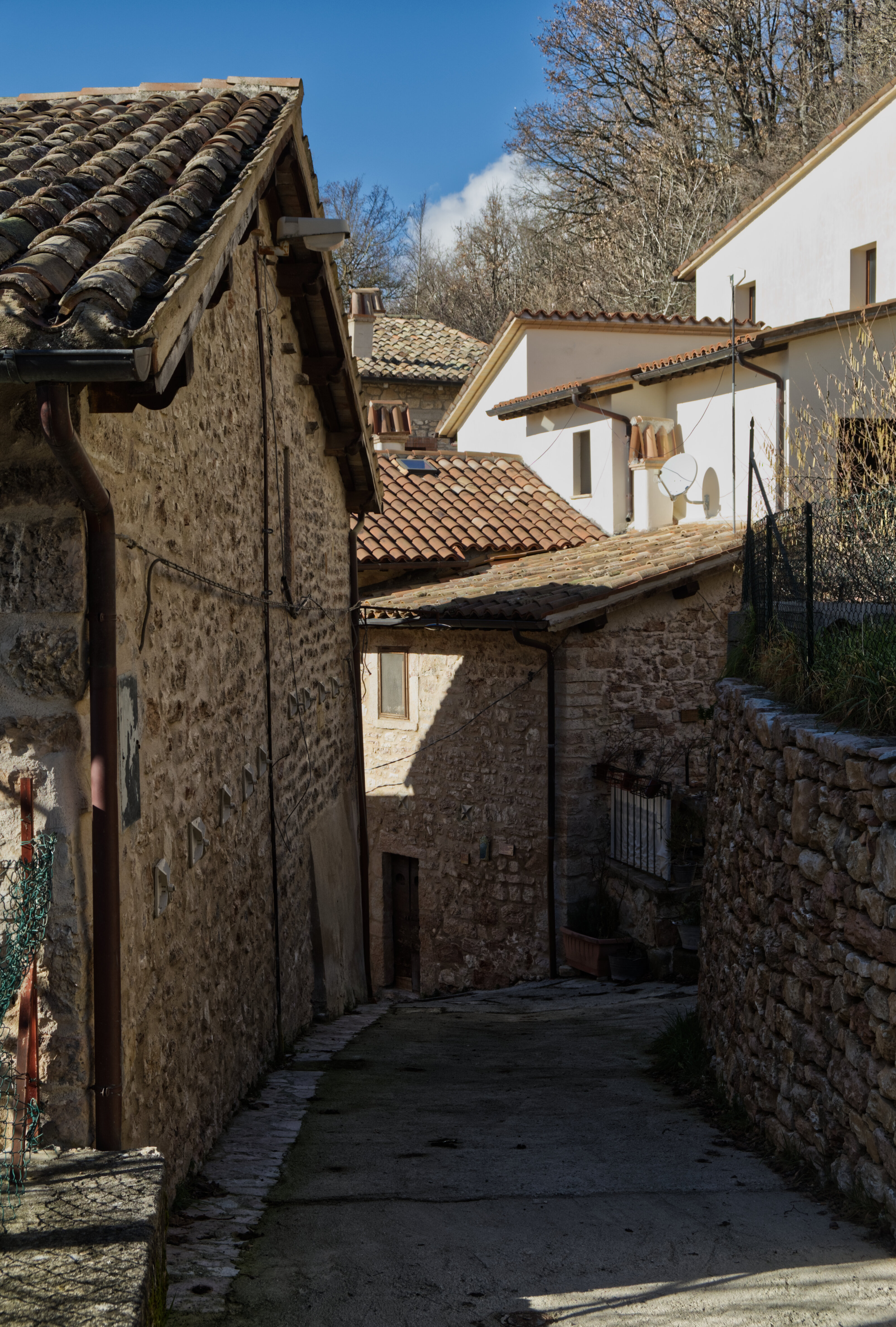La Piaggia, with its ancient pink stone buildings and the suggestive panorama that surrounds it, is a jewel set in the Apennines, in a wonderful valley of the Sibillini Mountains, between Norcia and Spoleto. A FAI (Italian Ambient Fund) heartland that has preserved its medieval charm, offering visitors a unique experience in Umbria, the green heart of Italy.
This small mountain hamlet is located 11 km from Sellano, on the road leading to Montesanto, the arrival point of Europe's highest Tibetan bridge, to be inaugurated in March 2024. At first glance, one has the sensation that time has stood still here; but on closer inspection, around the stone walls of the now completely uninhabited houses, one sees an extraordinary swarming of life. The vegetation is lush and unspoilt, and it is easy to make special encounters with foxes, hares, grey herons, peregrine falcons and even marvellous fawns running free in the hills.
For lovers of sport and outdoor activities, it is a true paradise. There are numerous routes for mountain bikes and hikers, trekking trails on the Apennine paths that reach as far as the Marche, and interesting walls to climb for mountaineering and climbing enthusiasts. Soon the fine weather will return to warm the air, green the meadows and offer wonderful views in which to experience unforgettable moments.
Piaggia, an ancient history full of charm
Situated at an altitude of 1,000 m, La Piaggia was built around a spring not far from Montesanto, an important Guelph medieval castle. In past centuries and until a few decades ago, it was at the centre of a dense network of roads and paths that connected Sellano and the entire Vigi Valley with the Valnerina and the Marche. It was therefore subject to pilgrimage routes, being also a border area with the Marche region.
Today it appears isolated, far from important communication routes, but until the 1980s it was, in fact, the centre of all the hamlets: Civitella, Setri, Renaro, Ceseggi, Petrognano, La Piaggerella, Montesanto and Peneggi. Despite being the most densely populated hamlet in the district after Sellano, life here flowed slowly and embraced the rhythms of nature, agriculture and sheep farming. Each family owned goats, sheep, cows, rabbits, chickens, pigs and several plots of land to cultivate.
As Dario Sabbatucci, a distinguished scholar of the history of religions born here in 1923, also recalls, its inhabitants enjoyed few simple pleasures. In their spare time, they played cards and bowls while the women met at the village fountain, where they did their laundry almost every day.
There were two shops in the village, the Emporio Mari and the Spaccio di Neno, where one could find anything. There was also a tobacconist, a carpenter, who became a barber when necessary, two shoemakers, a blacksmith and only one telephone. Imagine, the only one in the whole area!
In addition to farming and sheep-breeding, another feather in the cap of this hamlet of the Valnerina was the 'rasparo', i.e., the person who produced iron tools, particularly files and rasps. Skilled hands deftly forged the tools, which were so excellent that they were exported all over northern Italy and the surrounding area.
Sacred Architecture and the Legend of the Holy Icons
Three churches stood in the district: St John the Baptist in Renaro, St Lucia in Piaggia and St Martin, today Campo Martino. There is also a small Marian shrine below the mountain of Piaggia that recalls the legend of the Holy Icons.
Legend has it that a group of shepherds were playing cards around the fire when one of them, annoyed by the outcome of the game, cursed and threw the board on which the cards were resting into the flames. This bounced from the fire and returned in front of them, bearing the effigy of Our Lady on one side.
The relic remained preserved for many years in the Church of San Lorenzo, in Postigano di Sellano. Every year, on the occasion of Pentecost, Holy Mass was celebrated, at the end of which the 'kissing of the relic' took place. It was a festive day, accompanied by popular games and evening dances in the square. Then one day the precious relic was stolen and never returned to the area.
What to see and do today at La Piaggia
Today, La Piaggia is still a small thousand-year-old village with an evocative and peaceful atmosphere, a treasure chest of natural beauty waiting to be discovered, a stone's throw from Europe's highest Tibetan Bridge. Those who have the curiosity and time, can reach La Piaggia on foot from Montesanto along a charming route.
In the surrounding area, there are many small unspoilt pearls to visit and discover. Civitella, Setri and Peneggi, Forfi and Piaggia. Continuing from Piaggia, passing through Renaro you can even cross into the Marche region. A very beautiful and fascinating cycling itinerary for lovers of the two wheels and an unforgettable place for trekking enthusiasts.
Not far away, in the village of Morro, there is also an excellent facility where one can spend a holiday immersed in the rural Umbrian skyline; magic! I Casali di Morro, old stone farmhouses that have been skilfully converted into an agritourism with swimming pool, it has rooms and furnished flats, offering the charm of times gone by, where one can spend a holiday immersed in nature, admire the beautiful valley and enjoy breathtaking sunsets, a privileged view of Montesanto and part of the Tibetan bridge.
But nature and history are not the only attractions of this breathtaking area. Also worth mentioning is the excellent food!
As in the rest of the Valnerina, the black truffle is one of the most typical products here. The Mari family, owners of the Emporio Mari, were great truffle-harvesting enthusiasts. Grandfather Fedele used to collect them in Sellano, Norcia and the Valnerina by loading them on his mule.
In addition to truffles, Piaggia is famous for its Serpillo thyme, a rare and ancient aromatic plant with an intense fragrance, ideal for flavouring many dishes, mushrooms and spelt.
The page @La Piaggia, much followed on Facebook, offers itineraries, curiosities and suggestions for getting to know and visit this area and Umbria, appreciating all its richness and beauty.
